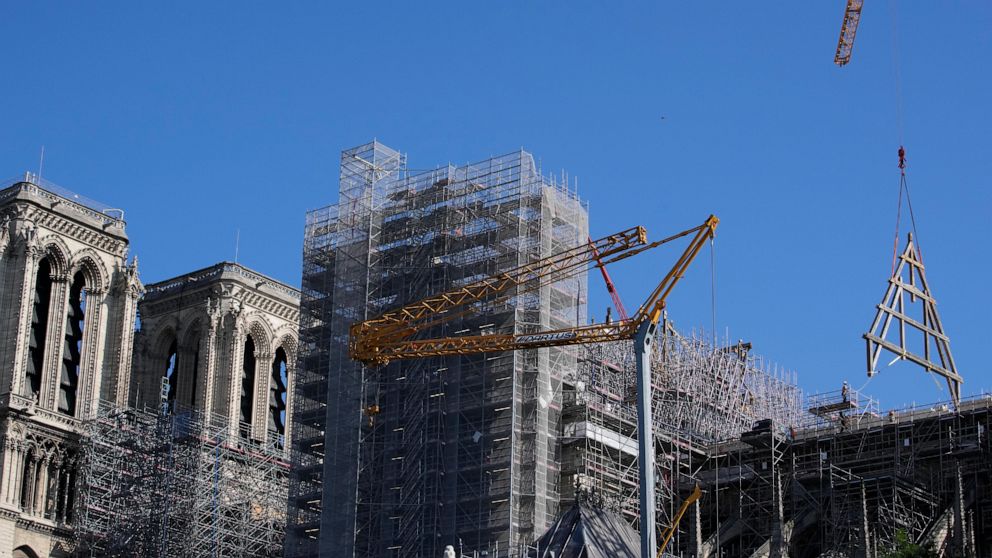Crane Assists in Raising Large Wood Trusses to Notre Dame’s Fire-Damaged Roof in Paris
The devastating fire that engulfed the iconic Notre Dame Cathedral in Paris on April 15, 2019, not only destroyed a significant part of the historic structure but also left the world mourning the loss of a cultural treasure. However, in the face of adversity, there is hope, and the restoration efforts have been underway since then. One crucial aspect of this restoration involves raising large wood trusses to rebuild the fire-damaged roof, and a crane has played a vital role in this process.
The Notre Dame Cathedral, with its Gothic architecture and rich history dating back over 850 years, has always been a symbol of France’s cultural heritage. The fire that tore through the cathedral’s roof and spire was a heart-wrenching sight for people around the world. However, the determination to restore this architectural masterpiece to its former glory has been unwavering.
One of the most challenging tasks in the restoration process has been replacing the massive wooden trusses that supported the cathedral’s roof. These trusses, made from centuries-old oak trees, were an integral part of the cathedral’s structure. To accomplish this feat, a crane was employed to lift and position these trusses into place.
The crane used for this task is no ordinary machine. It is a specially designed heavy-duty crane capable of lifting immense weights with precision and stability. Given the size and weight of the wooden trusses, it was essential to use a crane that could handle such a demanding job.
The process of raising the wood trusses begins with careful planning and coordination. Engineers and construction experts work together to determine the exact specifications and dimensions required for each truss. These measurements are crucial to ensure a seamless fit into the existing structure.
Once the trusses are fabricated according to the specifications, they are transported to the construction site. The crane, with its powerful lifting capacity, is then positioned strategically to hoist the trusses into place. The crane operator, working in close collaboration with the construction team, ensures that the trusses are lifted safely and accurately.
The precision and stability of the crane are of utmost importance during this process. Any miscalculations or errors could lead to further damage to the cathedral or compromise the safety of the workers involved. Therefore, the crane operator’s expertise and experience play a significant role in the success of this operation.
As each truss is lifted and positioned, it is secured into place using traditional construction techniques. The craftsmanship and attention to detail required for this task are immense, as the goal is not only to rebuild but also to preserve the historical significance of the structure.
The use of a crane in raising the large wood trusses for Notre Dame’s fire-damaged roof showcases the combination of modern technology and traditional craftsmanship. It highlights the determination of the restoration team to restore this cultural icon while respecting its historical integrity.
The restoration efforts at Notre Dame Cathedral have been a testament to human resilience and the power of unity. The use of a crane in raising the large wood trusses is just one example of the many innovative techniques employed to rebuild this iconic structure. As the restoration progresses, it serves as a reminder that even in the face of tragedy, hope can be found, and beauty can be restored.



